The art of gemstone engraving
I remember my astonishment when I entered a gemstone engravers workroom for the first time and saw a plethora of drills and cutters in all shapes and sizes. My amazement grew even bigger as I observed one of the engravers actually lathing a cutter from a cylindrical piece of tool steel.
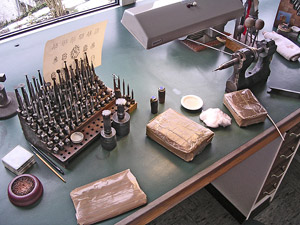
On inquiry the master confirmed that all engravers produce the tools of the trade themselves because the readily available tools do not run smoothly enough for the purpose. Whether spherical, discoid, tapered or needle-shaped, all drills are handmade on the engraver’s lathe.
But things were to get even better…
It seemed uneconomical to me that each engraver had his own set of tools, and a very extensive one, at that. Wouldn’t it be smarter to have two engravers share one set? The master smiled at my ignorance and advised me that drills can only be used with the very lathe they were made on. So to lean over to your fellow engraver and just borrow a drill is not an option. It just would not run smoothly enough.
Now then, the tool set is complete, the lapidary has delivered the lapis lazuli in the right shape and size on time and the master is ready to go. What next?
Firstly the customer´s template is sketchily copied onto the stone with a permanent marker, a job for the apprentice in the first year of his training. Whether the template comes in the form of another (sometimes damaged) stone, a wax imprint or a drawing is of no importance as long as it is clear enough.
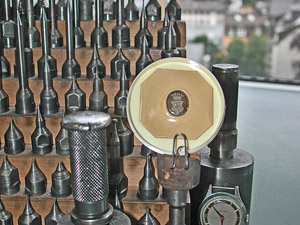
The stone is then cemented onto a short dop, not unlike a lapidary´s dop stick but much shorter, or the ring fixed into a short wooden clamp. Surprisingly enough and contrary to goldsmithing it is not the drill that is moved. In engraving the stone to be engraved is pressed gently onto the drill, rotating in the lathe at 3000 to 5000 rpm. Only for engraving very large objects e.g. vases, flexible shafts are used. So the whole process is performed freehandedly – definitely not a job for drinkers.
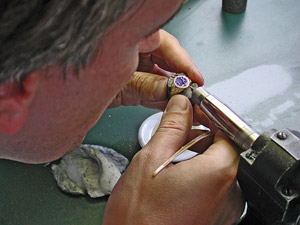
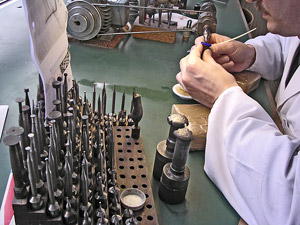
The cutting and grinding is achieved by a mixture of oil and diamond powder that is applied every few seconds by means of a quill. As we supply several lapidaries with diamond powder I smelled business and offered our services.
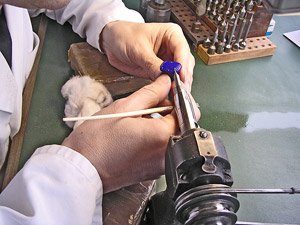
“Not fine grained enough”, replied the master. My objection that the grain size of our finest diamond powder is 0-0.5 micron and that all our stonecutting customers are highly satisfied with this was brushed aside.
“Yes, that’s good enough for polishing gemstones”, the master said jeeringly, “but we grind the powder ourselves – with these”. He pointed at two heavy iron mortars.
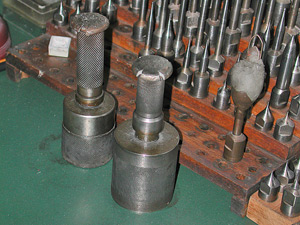
The engraving process itself is of nerve-wrecking slowness. Monograms can be done comparatively fast but with full coats of arms with shield, helmet, crest, mantling and maybe even a motto scroll, progress is measured in tenths of a millimeter. Every few seconds the stone is cleaned and the engraver casts a controlling glance at the template.
The hardness of gemstones is a factor not to be underestimated, either. The classic layered stone registers a “mere” 7 on Mohs´ scale of hardness but often enough the order is for tourmalines, spinels or even sapphires. In addition to accuracy patience is a cardinal virtue every engraver must possess.
After my visit and considering the expenditure and the utmost precision demanded by the job, it was crystal clear to me why gemstone engravings are expensive. In return for his money the client gets a product which despite all technical progress is still far superior to any laser or ultrasound engraving in terms of richness of detail and sharpness of contour.
 Deutsch
Deutsch